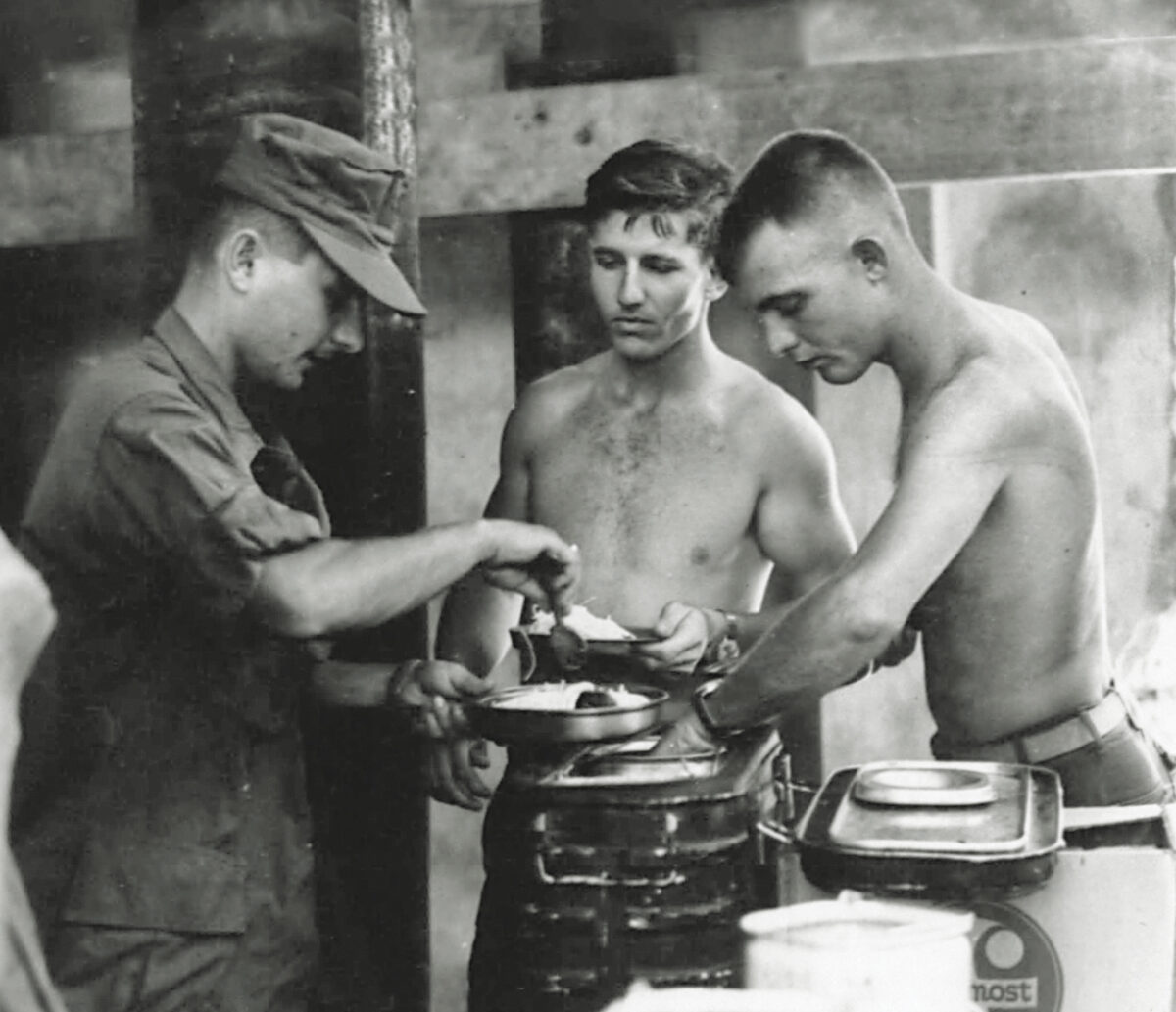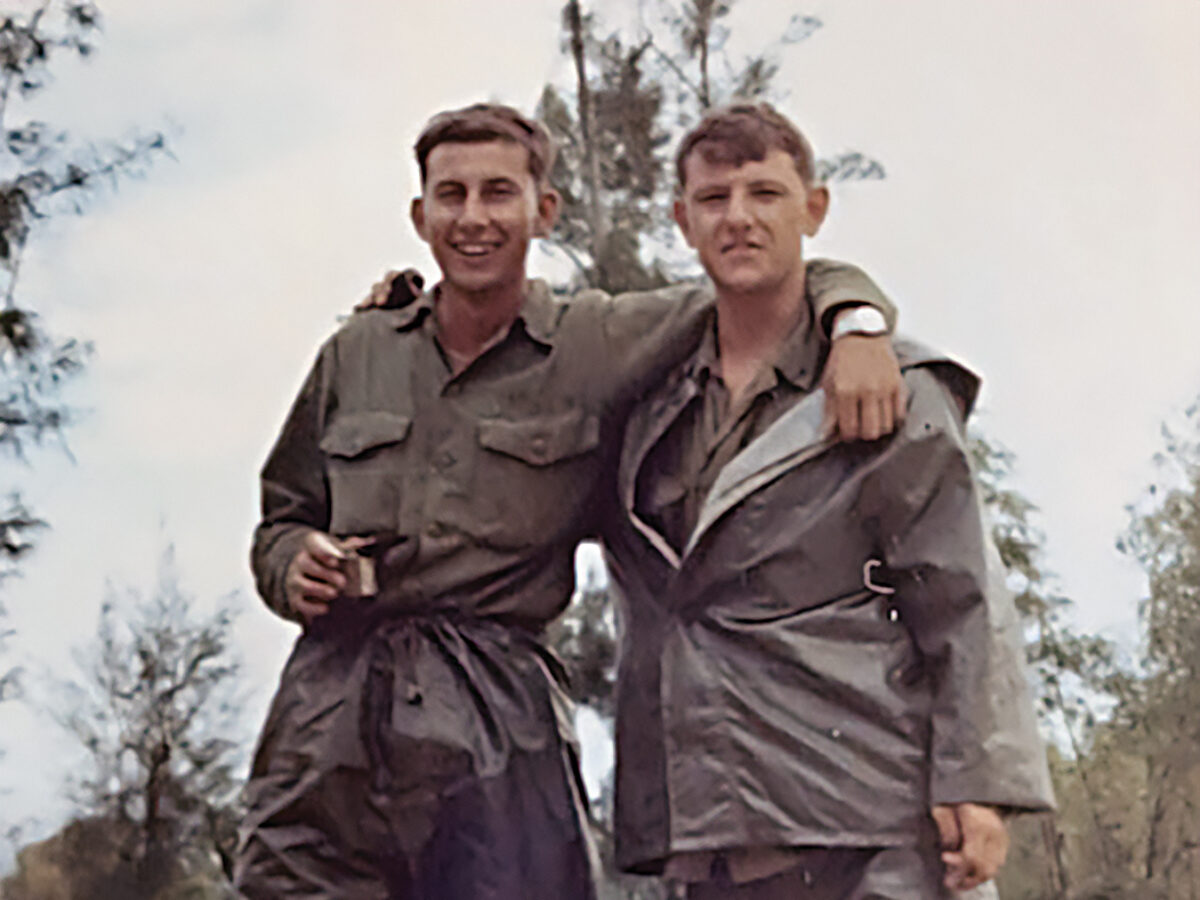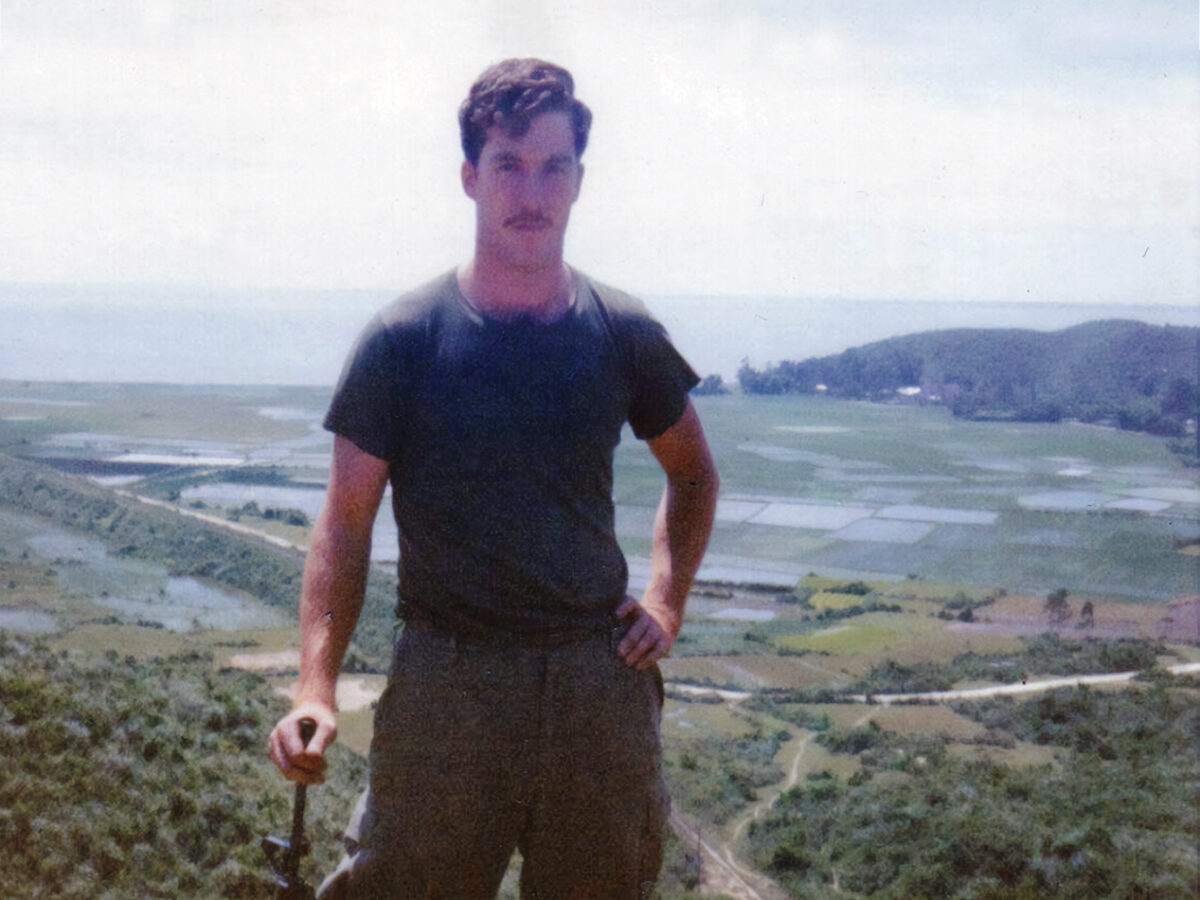In October 1967, as the North Vietnamese Army made final preparations for what would become known in early 1968 as the Tet Offensive, the 5th Marine Regiment was redeployed northward to reinforce the demilitarized zone. Replacing the leathernecks on Hill 63—which dominated the southern portion of the Que Son Valley 22 miles south of Da Nang—was our Army contingent, the 3rd Brigade of the 1st Cavalry Division (Airmobile).
The 1st Cav—famed for our yellow shoulder patch with a horse’s head—was the Army’s first and only airmobile division, with a huge inventory of helicopters capable of shifting men and materiel around the battlefield at a moment’s notice. This “materiel” included food—GI rations.
Seasonal monsoon rains gripped much of South Vietnam when our unit, the 1st Battalion, 7th Cavalry (Airmobile)—wiped out at the Battle of the Little Big Horn but resurrected as a combat assault force using Huey helicopters—was airlifted from fighting on the Bong Son Plain into the Que Son Valley, replacing the 5th Marine Regiment and redesignating their hill and principal outpost as Landing Zone (LZ) Baldy. It was an apt description for the small mound dominating the valley. The monsoons made it impossible for our large cargo helicopters to sling-load in the brigade’s supporting 105mm artillery pieces.
Recommended for you
Beer and Hot Sauce
The Marines were tasked to leave behind a battery of six 155s to keep the 2nd NVA Division off our backs until the monsoons passed by. Along with the 80 or so Marines of Whiskey Battery, a platoon of perhaps 15 minesweeping personnel remained on Baldy to probe the dirt-packed main supply route each morning for mines that the local Viet Cong forces may have planted during the hours of darkness. So let’s say maybe 100 gyrenes remained on the hill to take care of their Army brethren until we were better able to fend for ourselves.
Because the 1st Cav had something like 428 helicopters of all sizes, shapes, and capabilities, we were able not only to deploy our troops with unprecedented surprise and mobility, supported by our gunships and rocket-firing aerial artillery, but also to feed ourselves very comfortably compared to usual infantry grunts.
Choppers that weren’t in use chasing after NVA and VC bad guys could find gainful employment resupplying our sky soldiers not only with C-rations and water in five-gallon cans but also pretty fair (if soggy) ice cream, milk reconstituted from powder at processing plants in Yokohama, Japan, occasional cases of warm Budweiser beer, and large #10 cans of beef stew, corned beef hash, ham and beans, and other delicacies, which—heated over outdoor field ranges by our battalion cooks and liberally doused with Red Devil hot sauce, tabasco, and other condiments—made for a pretty decent meal after a hard day searching for and fending off the NVA.
On our first day at LZ Baldy, troopers of the 7th Cav ate cold C-rations like most combat infantrymen in Vietnam. On Day 2, “B” rations (the vastly improved meals originating in the large #10 cans) were very much du jour. By the third day, milk, ice cream, candy bars, and even some homemade brownies were being fed to our cavalrymen in the evenings.
Here Come the Marines!
Now I’ll say this for the 19- and 20-year-old leathernecks obliged to consume Marine-mandated cold C-rations on the far side of LZ Baldy: they sure weren’t no slouches! When the delicate aromas of our “home-cooked” gourmet meals began wafting over the hill to the Marine cannon-cockers and minesweepers, they began—cautiously at first—infiltrating our chow line. Their jungle fatigues looked a little different from ours; the Marines (who weren’t infantrymen and therefore were not used to living, breathing, and sleeping with their M16 rifles slung across their backs) looked cleaner and wore fatigues that weren’t as filthy as those worn by our cavalrymen. Other than that, you’d conclude that they looked like normal American boys a couple of years out of high school.
I was at that time the only major left in our battalion. The other major had sustained lung damage in the crash of the unit’s command and control helicopter and had been medically evacuated out of theater. So I was holding down two jobs: battalion executive officer and S-3 (operations officer).
One evening on the third day, I was eating my pretty decent evening meal al fresco on a small folding field table when the battalion’s mess steward came charging up the hill in a state of high dudgeon.
The Wisdom of Solomon
“Major! Major!” he exclaimed at the top of his lungs. “The f—g Marines are bucking our chow line!”
As mess sergeant, he had every right to be incensed at this invasion of the Army’s turf. After all, he was accountable for how many rations were consumed and if his count reflected a hundred or so extra meals being consumed each day for maybe a week or two, his jungle boots might be held to the fire.
What to do? I could of course direct that the “f—g Marines” be returned to their own side of the hill, destined to eat cold C-rations made soggier by the itinerant monsoon rains.
Then again, these were after all merely post-adolescent American boys—just like our cavalrymen—who were helping protect our rear ends until we could take care of ourselves. Did we in the Army have any ingrained right to live better than our leatherneck brothers in arms?
I looked up into the cloudy sky as the rains ceased for the moment, praying for divine guidance along with the wisdom of Solomon. Inspiration from above arrived mere moments later. I knew what had to be done.
“Feed the bastards,” I instructed the mess steward. And we did.
Bob Orkand, a retired lieutenant colonel of infantry, was drafted during his senior year at Columbia University.
This story appeared in the Autumn 2023 issue of Vietnam magazine.









